Egypt’s Only Travel Guide You Need For A Great Trip in 11 Easy Steps
- Destinations Africa
Cruisit Team
- March 29, 2022
- 1
- 4572
- 89 minutes read
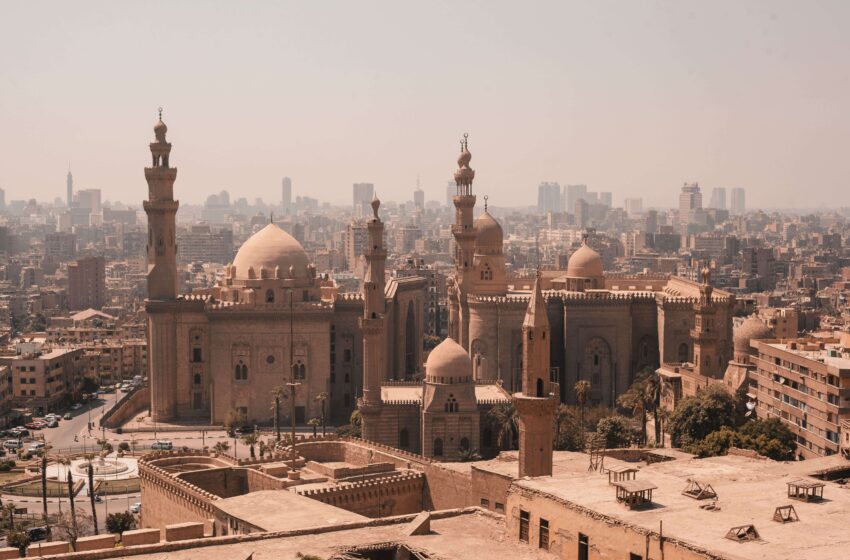
Egypt’s Background
The yearly Nile River flood’s regularity and richness, along with the semi-isolation given by deserts to the east and west, allowed for the establishment of one of the world’s great civilizations. A cohesive monarchy developed around 3200 B.C., and Egypt was controlled by dynasties for the following three millennia. In 341 B.C., the Persians defeated the last local dynasty, who were then succeeded by the Greeks, Romans, and Byzantines. In the seventh century, the Arabs introduced Islam and the Arabic language, and they governed for the following six centuries. The Mamluks, an indigenous military aristocracy, assumed power about 1250 and remained to administer Egypt when the Ottoman Turks conquered Egypt in 1517.
“Egypt, a country with a vast and diverse history with almost all civilizations, a strategic location, and many stories to hear“
A steady population explosion (the Arab world’s largest), limited arable land, and reliance on the Nile all continue to strain resources and strain society. The government has worked hard to prepare the economy for the new millennium by implementing economic reforms and investing heavily in communications and physical infrastructure.
We’d be lying if we said that seeing the relics of ancient history up close isn’t the major appeal of Egypt. During our travels around the nation, we’ve enjoyed visiting and learning more about prominent places like the Valley of the Kings, but we’ve discovered there’s much more to appreciate than ancient remains.
Egypt is really about experiencing the old, but it’s also about immersing yourself in medieval Cairo with your professional guide, lounging on deck while watching the shifting landscapes on a Nile cruise, and many long, languid meals of mixed grill and baba ganoush served by warm, conversational Egyptians.
Cairo’s frenzied spirit hits you as soon as you exit the airport and face the entanglement of four-lane traffic (along with the occasional donkey and cart). The city is at its finest in the evening, when it is frantic, hot, and raucous. Locals gather to food kiosks, shisha-scented coffeehouses, and the alleyways of the Khan el-Khalili souq at this time. With so much to see and do, Egypt allows travelers to plan trips that mix culture, adventure, and leisure all in one.
- Explore the Museum of Egyptian Antiquities
- Wander the streets of old Cairo
- Ride a Folouka
- Witness how small you are at the Pyramids at Giza, Saqqara, and Dahshur
- Cruise the Nile from Luxor to Aswan
- Look up the mighty columns of the Temples in Luxor
- Enter the tombs in the Valley of the Kings
- Discover Nubian Culture in Aswan
- Gaze at Abu Simbel
- Dive in the Red Sea
- Walk Alexandria’s Corniche
- Meet the Amazygh in Siwa Oasis
- Climb St. Catherine Monastery
- Watch the beauty in Wadi El Gemal National Park
- You don’t need any special vaccinations to visit Egypt, however, it is advised to check your government’s travel recommendation.
- Tap water is safe to drink but highly chlorinated, we advise you don’t drink it.
- Tipping is customary in Egypt
- Bargaining and haggling in Egypt are highly advised (but only in local bazaars and markets of course) don’t expect to bargain your way in a restaurant.
- Egyptians are very hospitable, friendly, and humorous by nature.
- When declining to purchase something, put your right hand over your heart and say “Shukran” this is the polite way to refuse an offer or service.
- Egypt is a very family-friendly destination to go to.
- Getting online is as simple as getting a SIM card, and is available in most hotels.
- Most nationals can get a visa upon arrival, some also get in visa-free, check before you travel in case your country is one of the few that require it in advance.
- Even though the country is trying to push cashless and banking, Egypt is a cash-oriented society. Be prepared with cash. However, there is no shortage of ATMs in the country.
- Renting a car in Egypt is not advisable as the rules of driving are barbaric compared to Europe, the USA, Canada…etc. Cars fill every available space on the road and to be frank, it takes a very skilled driver to cope with how Egyptians drive. There is a different rhythm and flow with car horns filling the air. Long story short, we don’t advise driving there. However, it is advisable to hire a driver. It can be cheaper than renting.
- Egypt is considered a very safe country to visit, given you know where to stay and how to dress. But as a tip for women traveling alone, harassment unfortunately is common in the center of Cairo. Just make sure you practice common sense and don’t walk in dark streets alone. Otherwise, the country is very safe, especially since there is a huge presence of police and military in most places.
This rest of this section will be updated soon.
The best time to visit Egypt is between October and April, when temperatures are cooler, but still pleasantly warm across the country. This makes exploring the busy streets of Cairo, visiting the Pyramids in the desert, and exploring ancient Pharaonic tombs more comfortable and enjoyable.
The summer season (May to September) is hot, although the high temperatures are alleviated by very dry air, air conditioning, far fewer visitors and lower prices. This means summer is still a viable season for your trip. There also tends to be a bit of a breeze on the Nile, making a river cruise a good choice during this period.
In our opinion, October-November and March-April have the best weather overall to make your time in Egypt enjoyable.
From Palestine/Israel and Cyprus by land and sea
At the time of writing, the Rafah border crossing between Gaza and Egypt was closed, and all traffic between Israel and Egypt was using the crossing at Taba near Eilat (open 24/7 except Eid al-Adha and Yom Kippur). Entering Egypt via Taba, you’re subject to an Israeli departure tax of NIS96 ($25.50), plus a NIS5 handling fee ($1.30) and an Egyptian entry tax of LE75 ($12.50).
Taba makes a fine jumping-off point for the Sinai coast resorts, St Catherine’s Monastery or Cairo. From Eilat, a taxi or a #15 bus (which doesn’t run on Shabbat) will get you to the Israeli checkpoint at Taba for an exit stamp; you then walk over to the Egyptian side, where Sinai-only visas can be obtained on the spot. It usually takes a good hour to cross the border, longer at holiday times. A few banks in Sharm el-Sheikh and one or two banks and foreign exchange bureaux in Cairo are the only places in Egypt where you can legally exchange Israeli shekels. You are not allowed to drive rented cars across the Israeli–Egyptian border. You can find updated news about the opening and closing of the borders here.
From Jordan by land and sea
Direct buses do the 23-hour journey from Amman to Cairo, but they are neither pleasant nor economical. Unless time is of the essence, it’s better to do the journey in stages taking a ferry from Aqaba to Sinai.
JETT, on King Hussein Street in Amman (t 06 566 4146, w jett.com.jo), 900m north of Abdali station, has two weekly departures (Tues & Sat) direct to Cairo for JD28 (approximately $40) one-way, plus $75 for the ferry and JD8 ($11.50) exit tax. Afana, next door to JETT and at Abdali station (t 06 568 1560), run buses (currently daily at 2pm) for JD75 (approximately $106) including the boat. Most of these services will drop you in Cairo at Almaza terminal, but some arrive at the more convenient Sinai bus terminal. These direct buses usually take the Aqaba–Nuweiba ferry, but some may travel overland through Eilat (Israel), a route whose drawbacks are discussed below, so you may want to check which route the bus will take before buying your ticket.
From Aqaba, the quickest route to Egypt is by land via Eilat in Israel, using local transport. Disincentives are the telltale Arava and Taba border stamps, and the hefty exit and entry taxes (totalling around $46.50) payable at Eilat and Taba.
Alternatively, there are ferries from Aqaba to Sinai. Arab Bridge Maritime Co. (w abmaritime.com.jo) runs a fast ferry (daily; 1hr; $75) and a slow ferry (daily; 3hr 30min; $65); both take vehicles but are subject to unpredictable delays, and the slow ferry is notoriously unpunctual. You can buy tickets from the company’s offices in Amman (beside the Royal Jordanian building just off 7th Circle; t 06 585 9554) or Aqaba (Sharia al-Batra, by Humam Supermarket; t 03 209 2000), from agents in Aqaba, or up to an hour before departure at the passenger terminal itself, 6km south of Aqaba (t 03 201 3236). The terminal is served by local buses from Aqaba’s fort (heading towards the Saudi border at Durra), or costs around JD5 by taxi.
An alternative is provided by Meenagate (next to the JETT bus park opposite the Kempinski hotel; t 03 201 3100, w meenagate.com), who run a catamaran service from the Royal Yacht Club, next to McDonald’s in central Aqaba (daily 7.30pm, arrive an hour before departure; $85), sometimes supplemented by a ferry service from the main terminal. This service does not take vehicles, but bicycles are carried free so long as you arrange this when booking. You need to book by email, 24 hours ahead, attaching a scan of your passport (or alternatively fax it on f 03 201 9461).
You pay a JD8 exit tax when boarding the ferry (and don’t expect any change back if you don’t have the exact money). Egyptian visas are available on arrival in Nuweiba (one-month full visa $15, two-week Sinai-only visa-free).
From Sudan by Land or Ferry
Wadi Halfa to Aswan is a route run by a ferry that sails along the Nile and across Lake Nasser. This is an unforgettable experience, however, it takes around 24 hours to reach the borders and runs once or twice a week, not to mention that it is a bit pricey. 2nd class cost around $30 and $50 for first class (which was not the best). Typically runs on Wednesdays between 10 Am to 4PM.
From Sudan by land runs on daily bus from Wadi Halfa or Khartoum and it costs from $14 to $28 respectively. Just make sure you are as patient as can be as Sudanese people usually go to Egypt to buy the most unusual items to be carried with them back to Sudan. This will certainly mean more time on the borders when at checkpoints. Due to the critical and political position of the borders, the Egyptian Authority usually checks every single piece of luggage thoroughly. This can only mean one thing… it will take forever to cross the border.
The Libya-Egyptian Border crossing
This one closes and opens regularly, and most of the time it’s shut. The reason is that a lot of terrorist attacks that are targeting Egypt forced the Egyptian Authorities to take measures including border closing. A lot of Libyan people used to cross the borders with their cars. The route they take from Tripoli to Misrata, then from Misrata to Sirte, then from Sirte to Tubruq, then crossing the border reaching Marsa Matruh, then reaching Alexandria, Egypt. this trip takes 3 days of which almost 24 of them is on the road, and the rest “to rest”.
Bus from Cairo Airport
You can go to the Bus Station located in the parking area in front of Terminal 1 and take the city buses downtown. If you arrive at Terminals 2 and 3, then you should take a shuttle bus to Terminal 1 first. No. 111 bus runs to Shubra and No. 324 bus towards Imbaba. And both these two and No.381 bus stops at the center of the city, and you can walk to the Egyptian Museum and Tahrir Square within 15 minutes from here. The price is EGP 5 / USD 0.3 for a single ticket and it takes about an hour to the downtown.
Taxi (Uber, Careem, Indrive…etc) from Cairo Airport
It’s possible for you to grab a taxi to the arrival hall. The old black and white taxis usually do not have a meter so you can negotiate with drivers before traveling, and they are usually not air-conditioned. It costs EGP 70 and up to 100 (about USD 6) to Tahrir Square in downtown Cairo and takes up to 90 minutes to the pyramids, maybe longer during the peak time. Or you can call an Uber and wait in the parking area. Many drivers don’t speak English, so it’s best to send a message with your location to them to find you.
By Air
The best way to get around Egypt from one city to the next is by air although there are reliable bus and train services, as it’s often far from one tourist center to another. Domestic flight service is mainly provided by Egypt Air, but Nile Air has a few services between Cairo and other major cities. You can book tickets online and may get a cheaper flight if you book a long time ahead. And if you change your location to Egypt at the top of the website, the price will be shown in Egyptian Pounds and be much less than the same flight costs when you give a location outside of Egypt. Take earplugs if you want to have a rest or sleep during your trip because the sound of ads and music videos is loud on the plane. Do keep in mind that this option is also the priciest.
In general, it’s only worth flying if your time is very limited, or for the view – the Nile Valley and Sinai look amazing from the air – although the trip from Aswan to Abu Simbel is easiest by plane. EgyptAir (egyptair.com) flies between Cairo and Alexandria, Mersa Matrouh, Port Said, Sharm el-Sheikh, Hurghada, Marsa Alam, Assyut, Sohag, Luxor, Aswan and Abu Simbel, as well as between Aswan and Luxor and between Aswan and Abu Simbel.
Fares rise as seats on the plane get booked up, so it’s best to book early if possible. In winter season, it’s wise to book at least a week ahead for flights between Cairo and Luxor, Aswan, Abu Simbel or Sharm. Always reconfirm 72 hours prior to the journey, as overbooking is commonplace.
By Bus
Taking a bus is the major way for locals to get around Egypt. You can get to most cities and towns by bus, at a reasonable cost. It’s safe, reliable, and the best way to some rural districts beyond the Nile Valley. Five major companies monopolize long-distance bus services and each serves a separate area of the country. Eastern Delta serves the Canal area, Mansoura, and Damietta; Middle Delta runs to Kafr El-Sheikh, Manufiyyah, and Tanta; Western Delta serves Damanhur, Alexandria, the NW coast, and Siwa; Southern areas serve all areas in the Nile Valley and along the Red Sea Coast; Sinai Buses Company serves all areas of Sinai. However, buses aren’t fast and are often delayed. If you are going to or from Cairo, you can waste at least an hour in city traffic. Bring a blanket or scarf to keep warm on account of the low air conditioning temperatures on the bus.
By Train
There is an efficient north-south railway linking the Nile Valley, Delta, and Canal Zone. You can enjoy a pleasant trip from Aswan in the south and Alexandria in the north by train. Mainline trains run from Cairo to Aswan via Luxor; Alexandria via Tanta, Suez, and Ismailia; Damietta via Mansoura; Sallum via Mersa Matruh. There are fast a/c trains from Cairo to Alexandria or Aswan, including sleepers and normal non-a/c local services, while from Cairo to Luxor/Aswan, foreigners are only allowed to travel on four “tourist trains” (two of which are sleepers), so don’t board the wrong train. Most trains leave from the main downtown station in Ramsis Square. There is a useful information office, and tickets are sold there, or you can check the schedule and book tickets at the Egyptian Railways website https://enr.gov.eg.
By Car
You can hire a car with a driver or self-drive to explore Egypt as petrol is cheap and by car is more flexible going from town to town. The maximum speed limit in the city or town is around 60km/h (37mph), 90km/h (56mph) outside town, 100km/h (62mph) on the high-speed way, and 30km/h (18mph) for stretches of roads. But locals don’t always obey the rules and highway limits are ignored, so you must be very cautious and avoid night driving.
Before making a reservation, be sure to find out if you can pick up the car in one city and return it in another. Generally, this is only possible with cars from Hertz, Avis or Budget. Before setting out, make sure the car has a spare tyre, tool kit and full documentation – including insurance cover, which is compulsory with all rentals. Also make sure that there is insurance covering everything related to the car, like accidents…etc as offices may want to make you pay for them.
Metro
The most efficient way to get around Cairo is by metro (no: +20225748354) (http://www.cairometro.gov.eg/). You can spend 2 EGP / USD 0.1 to any stop. It’s not crowded and runs every five minutes from 6 am to 11:30 pm. By 2014, Cairo had three lines and 61 stations:
Line 1 or red line (New El-Marg–Helwan): reaches Maadi, Tahrir (Sadat station), Ramsis (El Shohadaa station).
Line 2 or orange line (Shubra–El Monib): reaches Cairo University, Giza, Dokki and El Sadat, El Shohada and Attaba stations.
Line 3 or green line (Attaba–El Shams Club): reaches Heliopolis (Al Ahram station) easily and soon will connect to the airport (it is said in 2019 or 2020).
Bus/Microbus/Taxi/Uber/Car Rental
Buses are very crowded in Cairo. You can use the private microbuses for certain routes (GEP 2–5 / USD 0.1–0.3), for example, from the Giza metro to the main gate of the Pyramids, and from Midan Ataba to Midan Al Hussein for Islamic Cairo. Another option is to take a taxi or call an Uber. If you have a language problem, you can ask your hotel for help. Some taxi drivers also provide guide service. Driving in Cairo is nerve-racking due to the heavy traffic and limited parking space. So it’s recommended hiring a car with driver.
Top Places in Egypt
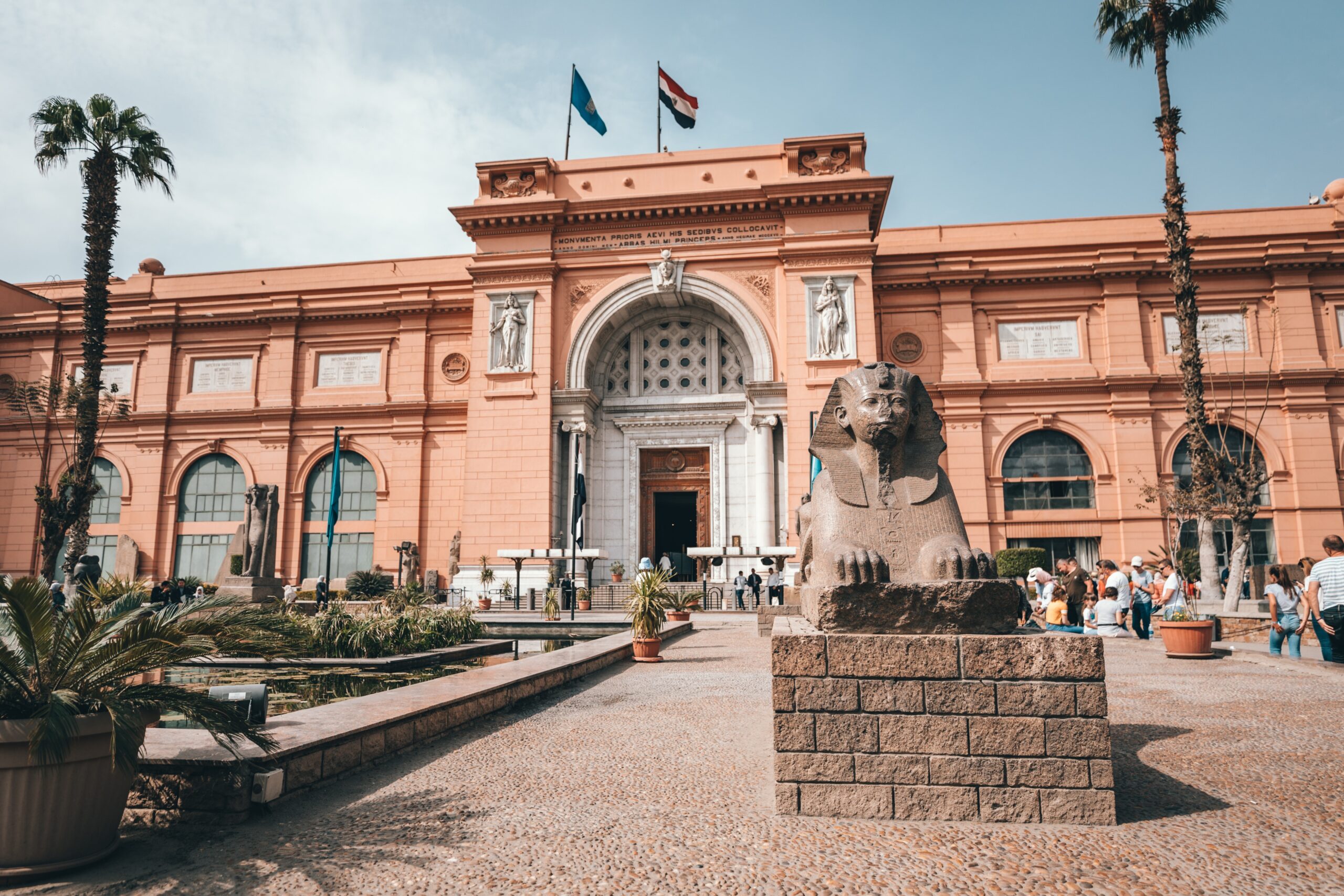
The Egyptian Museum
The Museum of Egyptian Antiquities was officially opened in 1901. It is one of the largest museums in the region. The museum is due to be superseded by the Grand Egyptian Museum at Giza in 2022. Its collection has 120,000 items, with a petite amount on display. This is surely the place you want to go to if you want to see and learn about the Ancient Egyptian Culture.
Valley of the Kings
The Valley of the Kings is a valley in Egypt where rock-cut tombs were constructed for the pharaohs and strong nobles from around 16th to the 11th BC. The valley is located on the Nile’s west bank opposite Thebes, in the center of the Theban Necropolis. It served as the primary resting place for the Egyptian New Kingdom’s important royal leaders. It is a place that will surely daze you with painting scenes from Egyptian Mythology.
Almost all of the tombs appear to have been plundered and stolen, yet they nonetheless offer a picture of the pharaohs’ splendor and power. Since the end of the eighteenth century, this area has been a center of archaeological and Egyptological inquiry, and its tombs and burials continue to generate research and curiosity.
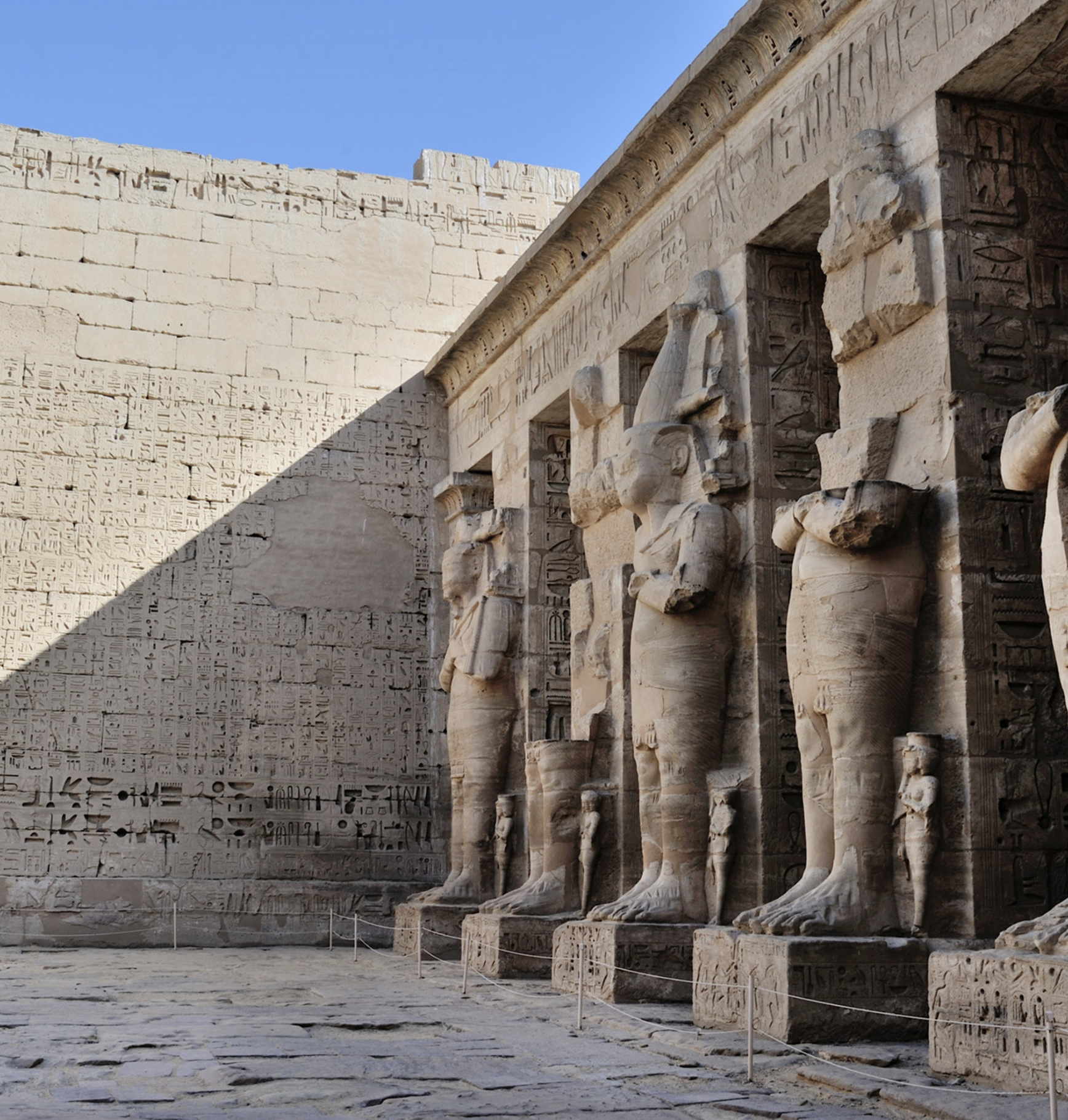
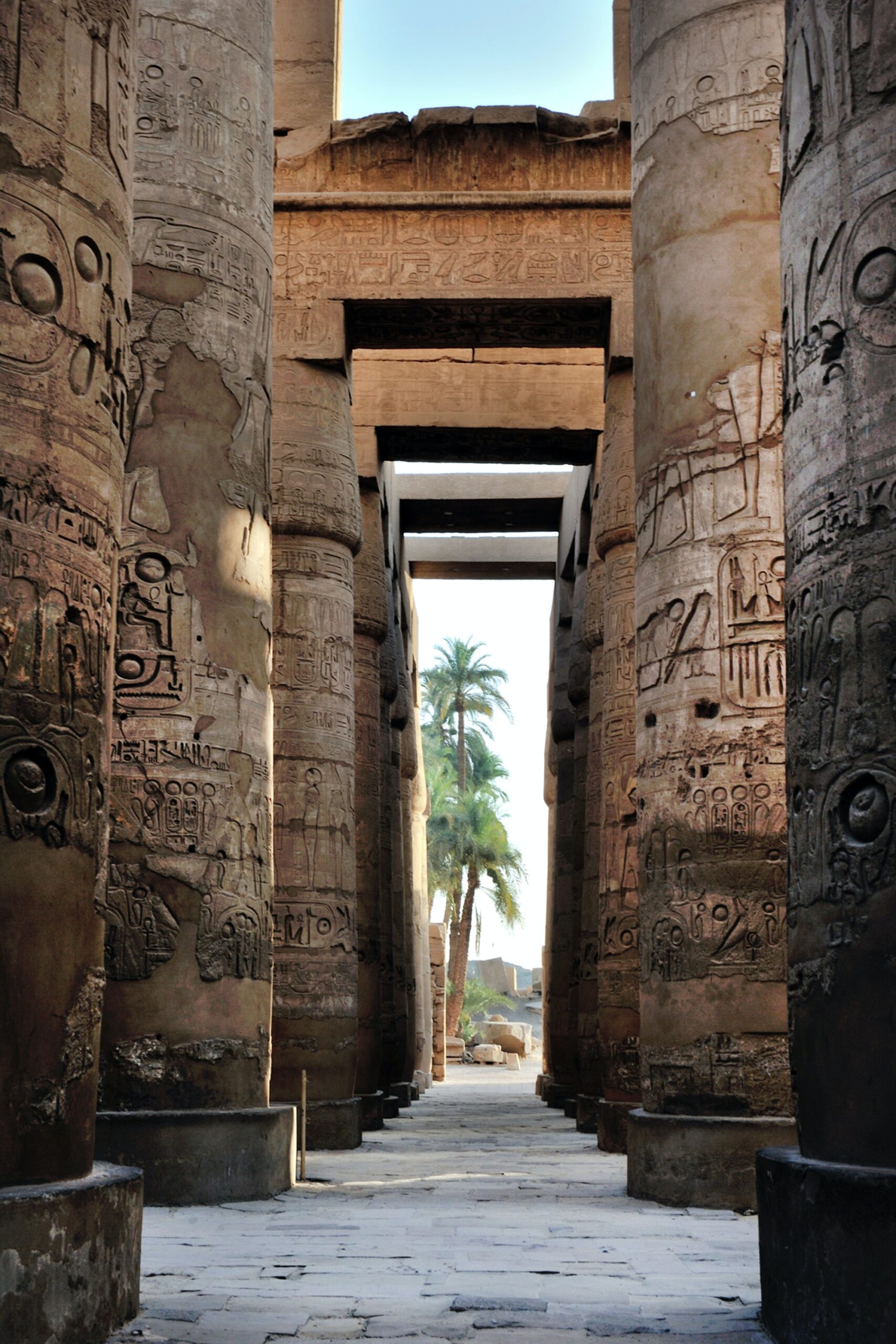
Karnak
The Karnak Temple Complex is a massive collection of ancient Egyptian temples, pylons, chapels, and other structures near Luxor. The complex’s construction began during Senusret I’s reign in the Middle Kingdom and continued into the Ptolemaic Kingdom. Even though it is considered from the New Kingdom, the area around it was the ancient Egyptian Ipet-isut, a principal center of devotion for the 18th Dynastic Theban Triad, which was led by Amun. Karnak was listed on the UNESCO World Heritage List in 1979.
It is located around 2.5 kilometres north of Luxor.
Abu Simbel Temple
Abu Simbel are two huge rock-cut temples located in the town of Abu Simbel, Upper Egypt. The twin temples were cut out of the mountainside in the 13th century BC, Which serves as a memorial to King Ramesses II of the 19th Dynasty. They serve as a permanent memorial to King Ramesses II.
The complex was moved in its entirety in 1968 under the direction of Kazimierz Michaowski, a Polish archaeologist from the Polish Centre of Mediterranean Archaeology at the University of Warsaw, atop an artificial hill consisting of a domed structure high above the Aswan High Dam reservoir, when the temple was threatened to drown.
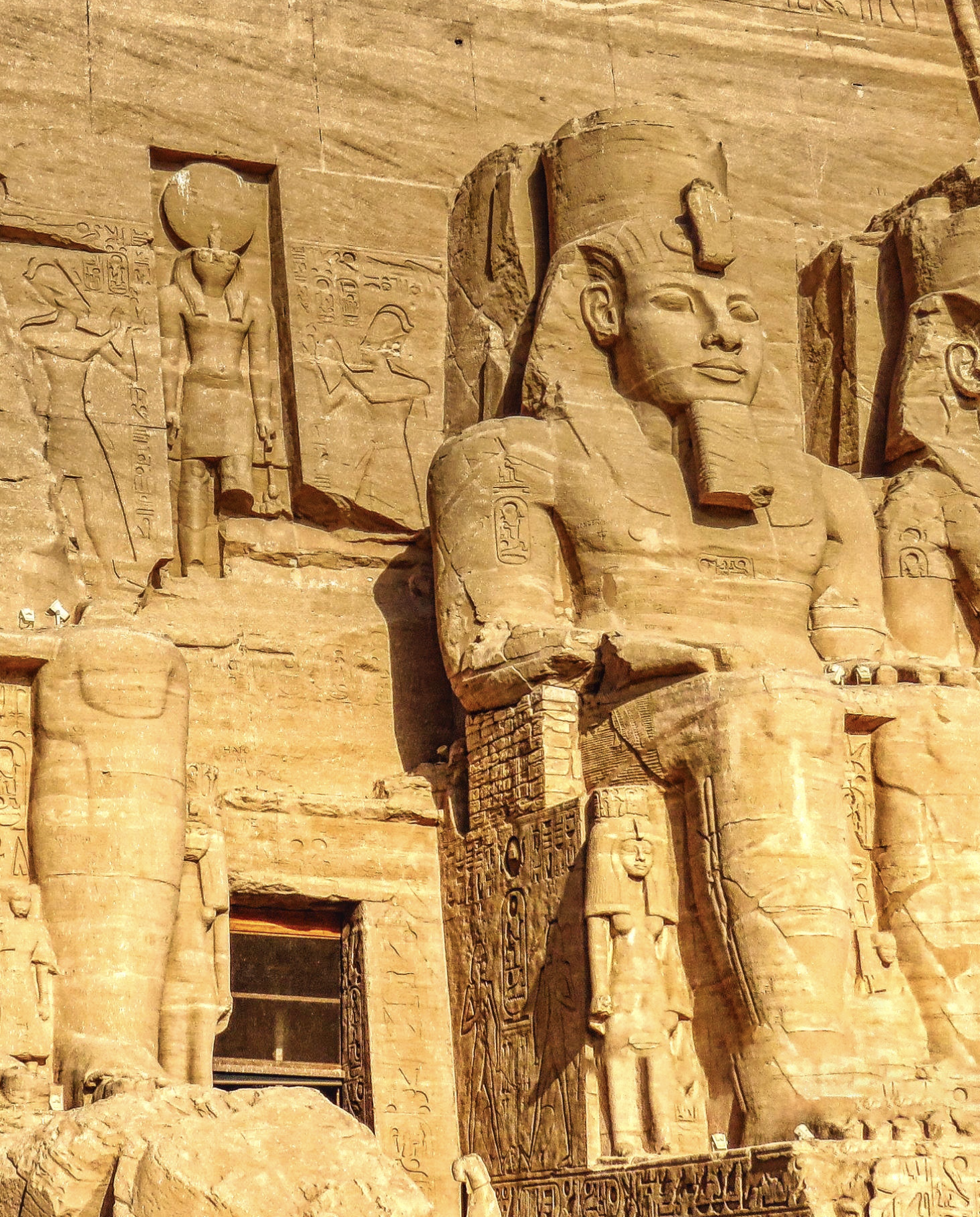
7-day Itinerary in Egypt (Optional up to 11 days)
Days 1 & 2 (with possible extension of 1 more day)
Cairo
Cairo is Egypt’s capital and the country’s largest city, and for many visitors, it serves as the beginning point for any Egypt itinerary. Yes, Cairo is enormous. It’s chaotic and expansive, yet it’s also thrilling and riveting in equal parts.
You won’t need more than a few days, but there’s a lot to see, including magnificent museums, bustling bazaars, and the famed Pyramids of Giza. The amount of time you spend in Cairo is totally dependent on the number of days you have available for your Egypt itinerary. You will only have time to visit the Great Pyramids of Giza and the Egyptian Museum on a 7-day plan.
Both the museum and Pyramids are must-see attractions in Egypt. Longer itineraries, on the other hand, give you more time to explore Cairo, which is worthwhile. If you arrive early on your first day, you can be lucky as you may go explore Khan El Khalili, a large bazaar and a must-see attraction in ancient Cairo. You can go around the market and see the historic mosques that used to make up Cairo.
Visit the Pyramids of Giza on your second day. While Cairo itself does not date back to the period of the Ancient Egyptians, the Pyramids of Giza are located close outside the city. These landmark monuments, which date back thousands of years, are a must-see.
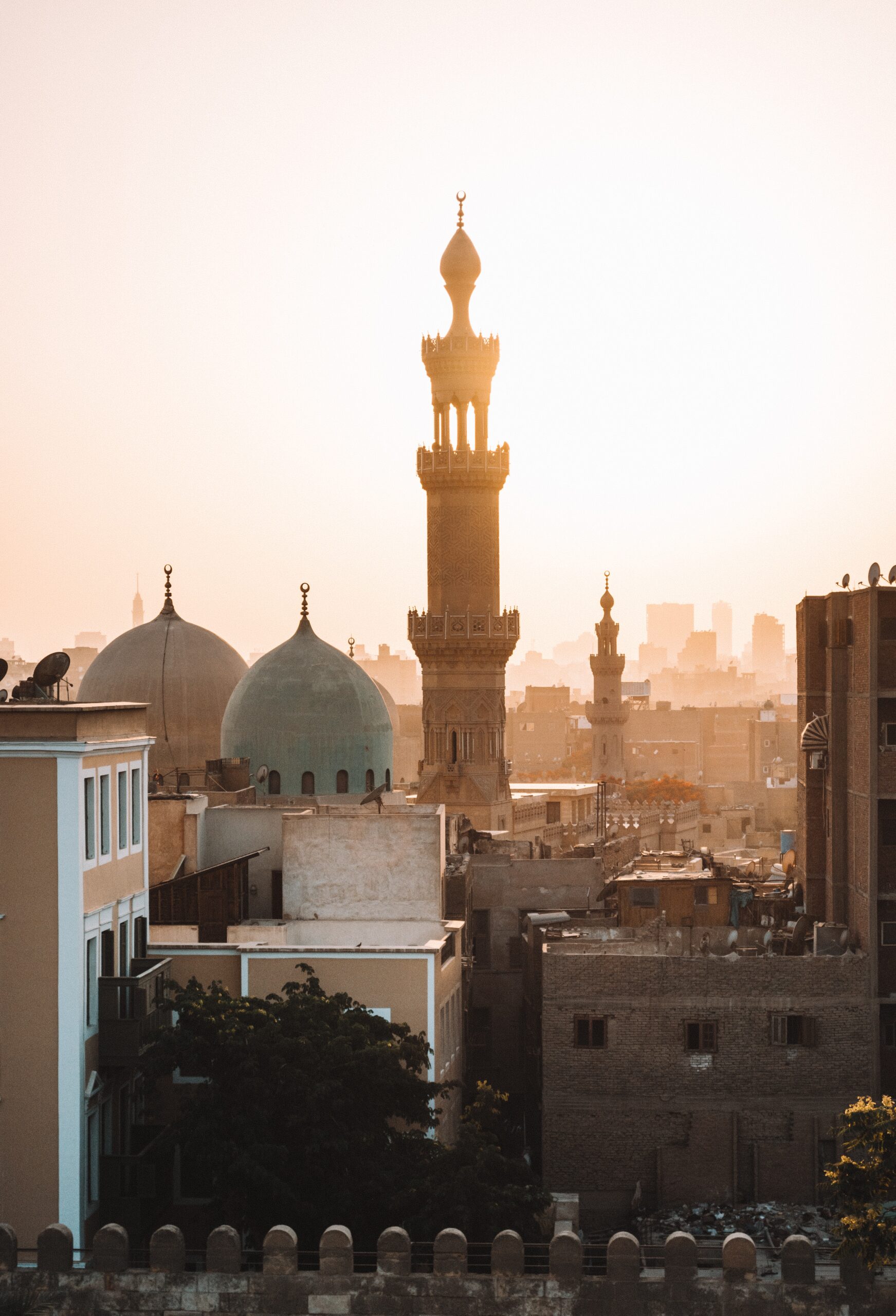
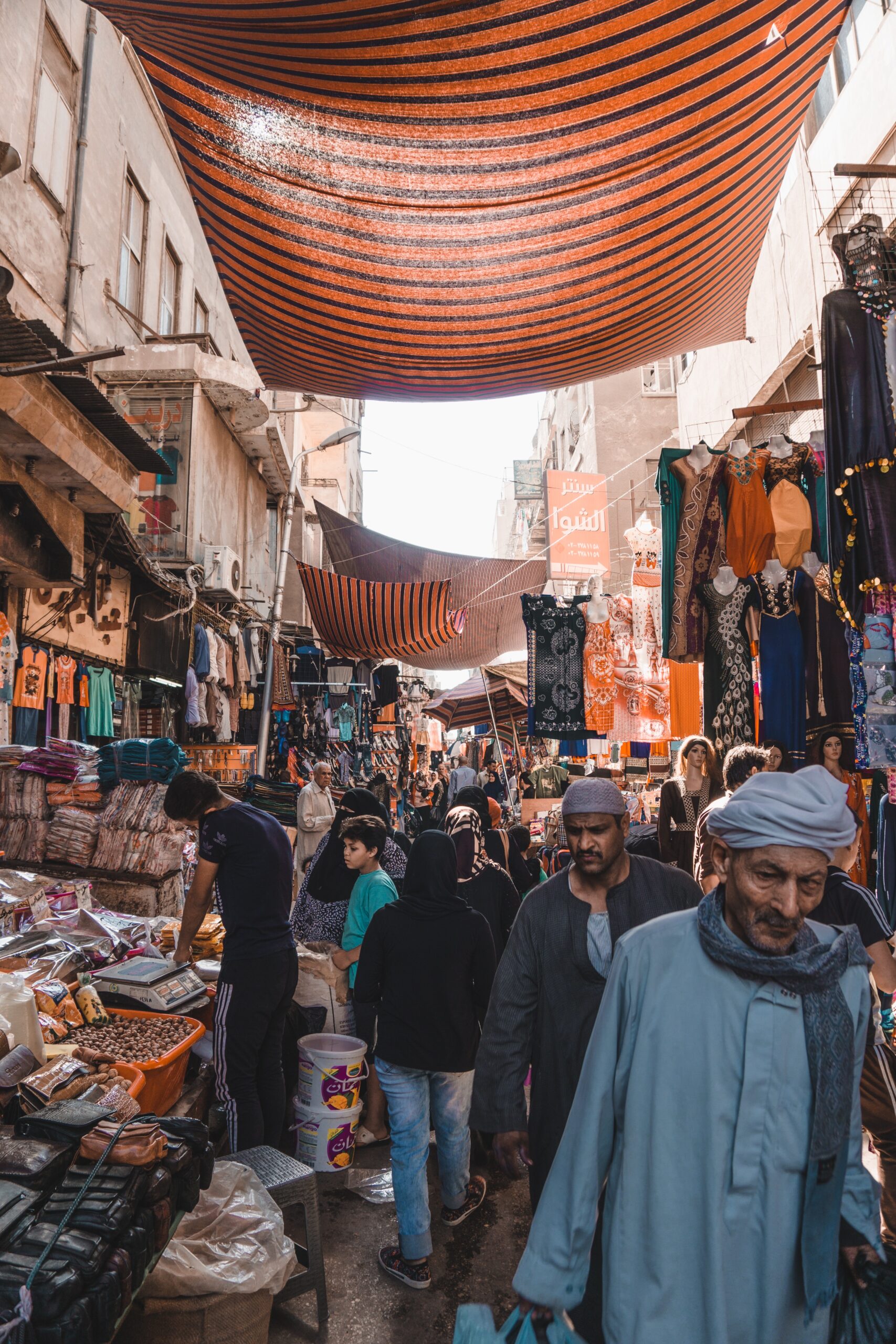
During your half-day journey to Cairo, you may next visit the Egyptian Museum, one of the most magnificent museums for Egyptian artifacts in the world, with a qualified Egyptologist guide. Explore the museum’s collection of over 160,000 jaw-dropping ancient artefacts to go back in time 5,000 years. While touring the museum, you can observe the famed Tahrir Square, the site of the 2011 Egyptian Arab Spring.
If you have an extra day, you should go to the Hanging Church, the Salah El Din Citadel, and the remainder of Old Cairo.

Egypt's capital has a tremendous amount of options for travelers to choose from including hostels for backpackers and budget travelers to midrange stays and luxurious resorts.
Backpacker (Nomad): Dahab Hostel, Holy Sheet Hostel, or Freedom Hostel
Budget: Paradise Botutique Hotel, New Star Zamalek Hotel, or Cairo Capital Plaza
Mid-range: The Square Boutique Hotel or Holiday Express Hotel
Luxury: Kempinski Nile Hotel, Four Season Nile Hotel, Marriot Zamalek, Marriot Mena House, or The Nile Ritz-Carlton
This section will be added shortly.
This section will be added shortly.

Days 3+ (Depending on whether you added the extra day in Cairo)
Fly to Luxor
If you choose a Nile River Cruise, you will be in for a treat. However, if you don’t enjoy being stuck with groups on excursions, skipping the cruise is a better option. You don’t have to take a Nile River Cruise; you may take the train or fly to Aswan and then to Luxor and do day tours to all of the sights mentioned.
Our cruise left from Luxor (but you may alternatively leave from Aswan, depending on which days work best for your schedule). We also spent some time walking around Luxor.
We left with a tour group at 3 p.m. that afternoon to visit the Karnak and Luxor Temples in Luxor. They are both breathtaking to witness. The Karnak Temple is the second most visited attraction in Egypt, behind the Pyramids.
This section will be added shortly
This section will be added shortly.
This section will be added shortly.
Days 4+
Nile Cruise then Valley of the Kings
Morning – Valley of the Kings
For over 500 years (from the 16th to the 11th centuries BC), tombs for pharaohs and aristocrats were built in the Valley of the Kings. They’re all buried in this valley, so looters won’t find them… and now you can go on a tour of some of them! More information may be found by clicking here.
Afternoon – Travel to Edfu by Nile Cruise or….
We spent the day on our Nile River Cruise resting. If you decide not to go on the boat, you might spend the day visiting more of Luxor. (Not to mention the Valley of the Queens!)
Another option is to fly directly to Aswan and then plan your day adventures from there.

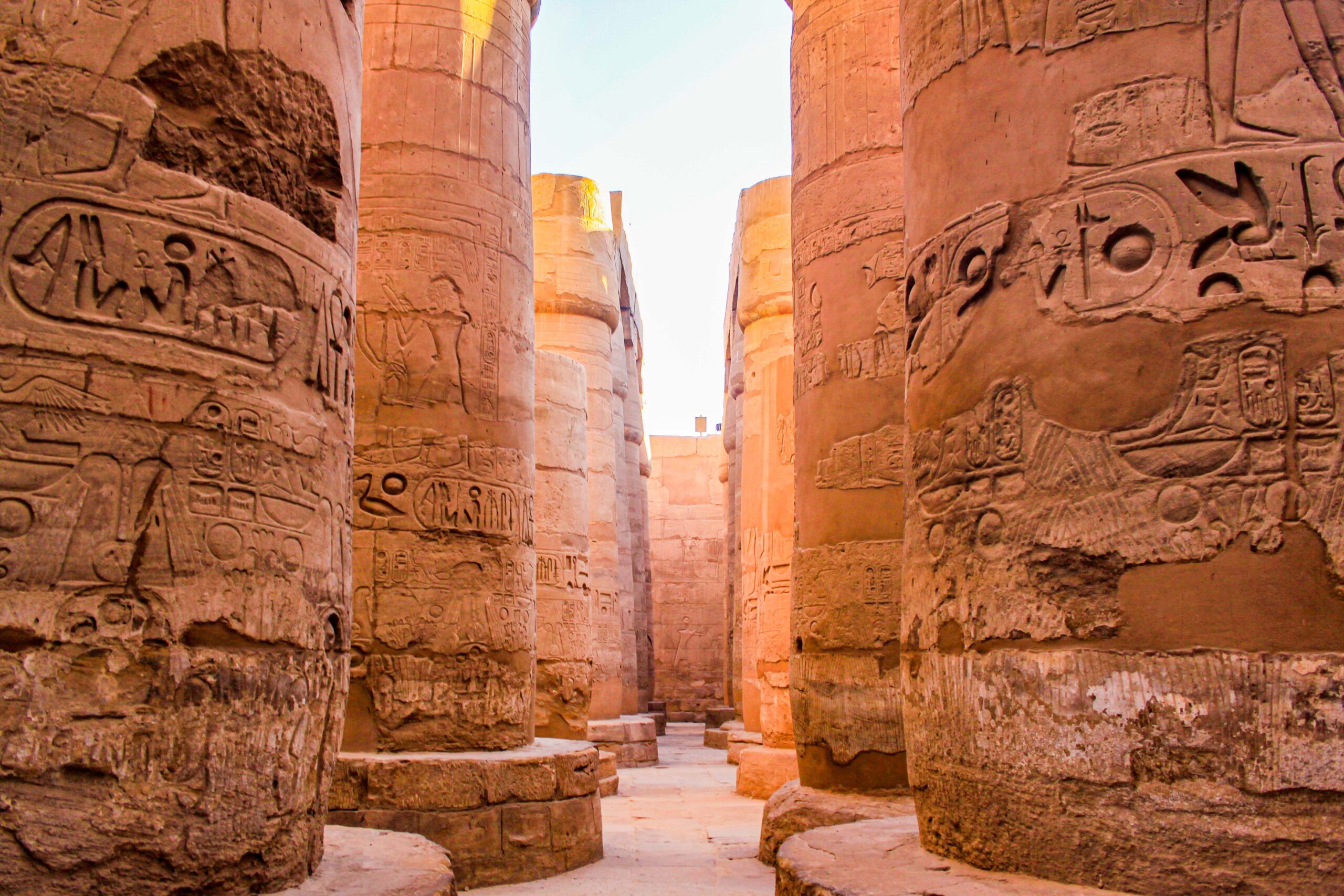
This section will be added shorty.
This section will be added shortly.
This section will be added shortly.


Days 5+
Nile Cruise then Edfu & Kom Ombo
Overnight – Nile River Cruise or in Aswan
Morning/Afternoon
Edfu and Kom Ombo are Egyptian villages along the Nile River that are home to two well-known temples: The Temple of Horus at Edfu and The Temple at Kom Ombo. Personally, I liked the Temple of Horus in Edfu since it was amazing to behold, and there were hardly any visitors there when we went early in the morning. (For additional information on visiting these two locations, go here.)
For our Nile Cruise, we went directly to Edfu in the morning and then to Kom Ombo later that afternoon. If you want to see them as a day excursion from Luxor or Aswan, it will be an all-day journey.
This section will be added shortly
Days 6+
Nile Cruise then Aswan Sightseeing
Overnight – Nile River Cruise or in Aswan
Morning – Temple of Isis (Philae Temple), High Dam, & Unfinished Obelisk
Aswan is a gorgeous city on the Nile River that has some extremely fascinating things to see! Aswan was arguably my favorite of the cities we visited in Egypt. It was really clean and contemporary, and the traffic was not as bad as it was in rest of Egypt. You may travel to the Temple of Isis, which is located on an island and was erected in 690 BC to commemorate the goddess Isis. The High Dam (which is supplied by the Nile River) is likewise not far distant… Neither is the incomplete obelisk, the biggest known ancient obelisk!
Afternoon – Relax or Do a Tour
You may spend the day relaxing by the pool on your Nile River Cruise or at your hotel, or you could go on an expedition. We went to the Nubian Village.
Another option is to go on a sunset felucca ride and visit some of the nearby islands. (This, in my opinion, would be the best option.)
You might also witness the Sound and Light Show at Philae Temple, which is said to be the finest of all sound and light performances.



This section will be added shortly
This section will be added shortly.
This section will be added shortly.




Days 7+
Abu Simbel then go to Marsa Alaam or back to Cairo to the airport
Overnight – Airplane or Aswan or Cairo (Depending on Your Flight)
Morning – Abu Simbel
If you are visiting Egypt, Abu Simbel is a must-see. This was honestly cooler than viewing the pyramids, and I’ve wanted to see the pyramids since I was eight years old! Abu Simbel is a community in southern Egypt near the Sudanese border. It is the site of two colossal rock-cut temples, one for the ancient Egyptian king Ramses II and the other for his queen, Queen Nefertari. (To learn more about visiting Abu Simbel, click here.)
Afternoon – Flight home
Depending on how your trip works out, you may be able to travel from Aswan to Cairo and then to your foreign destination. You might even stay another night in Aswan or Cairo before flying out the next morning. (Abu Simbel also has a small airport, but flights are few and far between!)
OR
Go to Marsaa Alam
Dolphin House “Sha’ab Samadai” in Marsa Alam, where snorkelers may just enjoy a view of the dolphins near the reefs while snorkeling with dolphins on the gorgeous Red Sea and having the opportunity to swim with the dolphins. A Marsaalamtours employee will take you up from your hotel in Marsa Alam and accompany you to the Marsa Alam marina. Board your boat to begin your adventurous journey to the Dolphin House, also known as “Sha’ab Samadai.”
Snorkeling excursion to the Dolphin House “Samadai Reef” will provide you with the opportunity to swim with dolphins in their natural habitat, Samadai (dolphin home) You will have two snorkeling stops near the reefs where dolphins dwell, each for around 45 minutes with a break in between to purchase beverages and refreshments. A fantastic location for all snorkel enthusiasts, merely to see the dolphins along the reefs.
This section will be added shortly
This section will be added shortly.
This section will be added shortly.


The reef has been given the nickname ‘dolphin house’ because it is formed like a horseshoe, providing protection from the wind and water and a great area for the spinner dolphins to rest and play. A once-in-a-lifetime opportunity to discover these beautiful resident marine mammals, who are happy to swim and play with visiting snorkelers and scuba divers for hours at a time. You may even get the chance to come face to face with the dolphins as they roam wild and free here. If you are patient and fortunate enough to be rewarded with the chance to swim with these fascinating creatures, you will be rewarded with a magical experience that will be well worth the wait.
You may then snorkel in the Shaab Marsa Alam region for a time before returning to the Marsa Alam dock for your journey back to your accommodation in Marsa Alam. To make this a wonderful day out at the Dolphin House, a buffet-style lunch and beverages will be offered onboard the boat. From Marsa Alam, you may return to Hurghada.h
This section will be added shortly.
This section will be added shortly.
This section will be added shortly.
Days 8+
Wadi el Qulaan & Wadi El Gemaal
Your adventure begins with a 4×4 Jeep ride to the renowned Valley. We drive 70.4 kilometers south of Marsa Alam to Hankurab beach (Sharm el Lulli), where you will spend an hour snorkeling and wandering. Then we will travel 8.5 kilometers to the second stage (Wadi el Qulaan) to enjoy strolling in the shallow water of Wadi el Qulaan. Lunch at Wadi el Qulaan can be booked through a tour or travel agency. After lunch, we will begin our desert safari excursion. We make our first halt for a spectacular Panorama view to show you the desert’s magnificence. Back in the jeep, we proceed to our second destination, where your guide will entertain you around the Akassia tree.
To learn everything there is to know about the desert, we will stop at the Arak (medical plant) shrubs region. We will climb to a natural water spring in Camel Canyon. The desert is plenty of riches to discover, one of which is Mysterious mining. Our guide will exhibit and tell you all about the history of the Antique Roman temple, Emerald mine, and ancient miners’ cottages in the Roman settlement. We’ll round off the day with a delicious BBQ meal beneath the stars in the midst of the desert!
The ideal setting for unwinding among the mountains and (falling) stars!
While travelling back to your accommodation, you may gaze out the window and marvel at the vast beauty of the desert!
Wadi El Gemal National Park has almost 5,000 square kilometers in size, encompassing various islands and a hilly terrain.

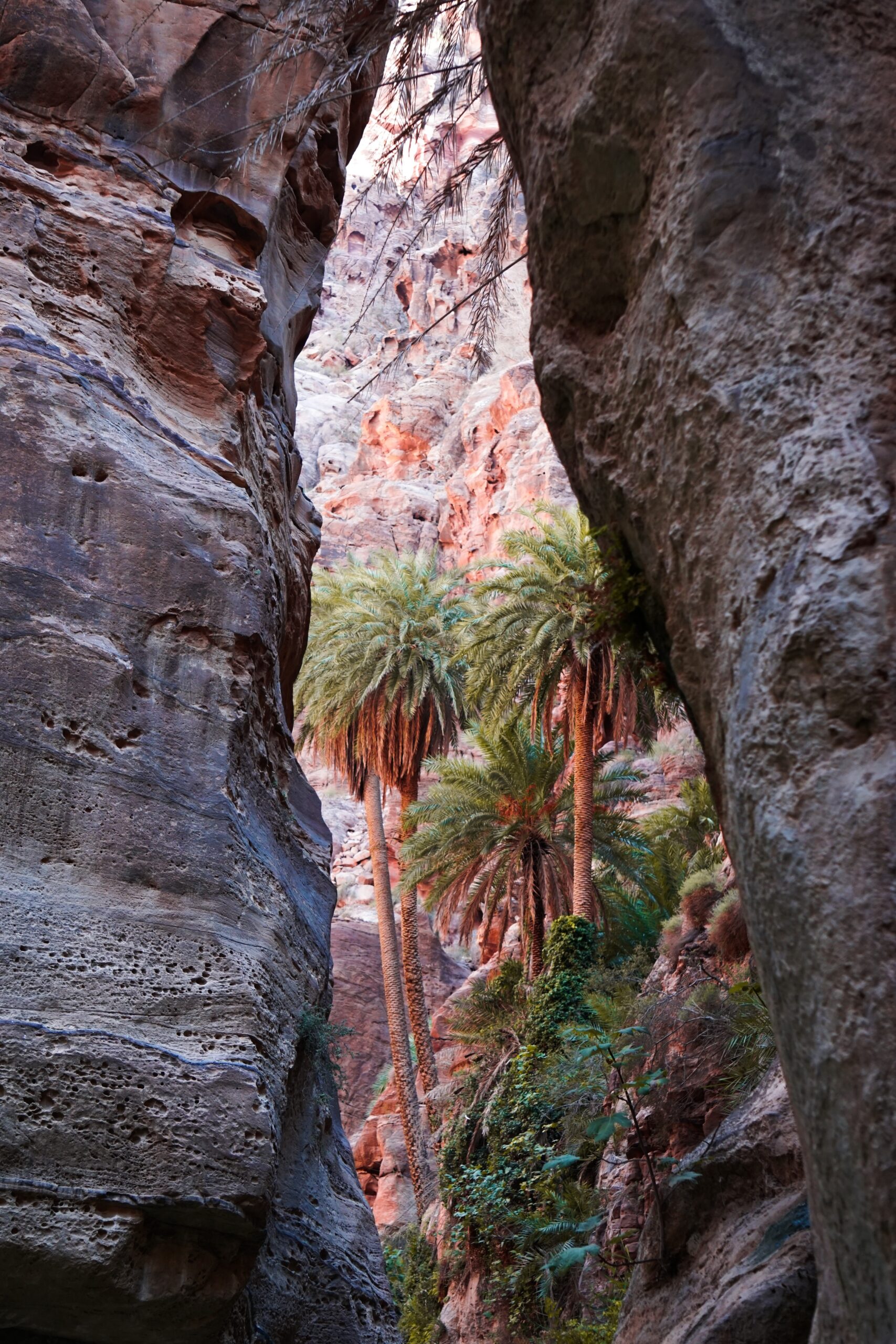
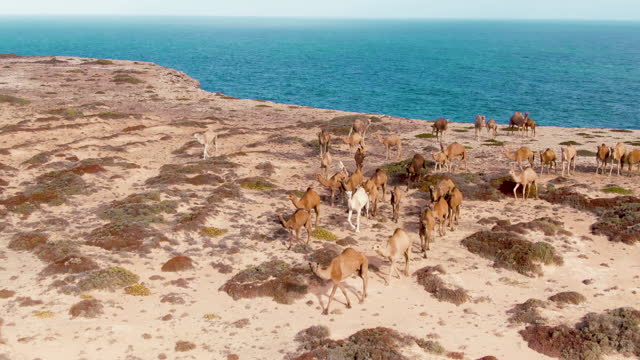
This section will be added shortly.
This section will be added shortly.
This section will be added shortly.
Days 9+
We hope you had fun. Take your next flight or continue on your quest to the next location.
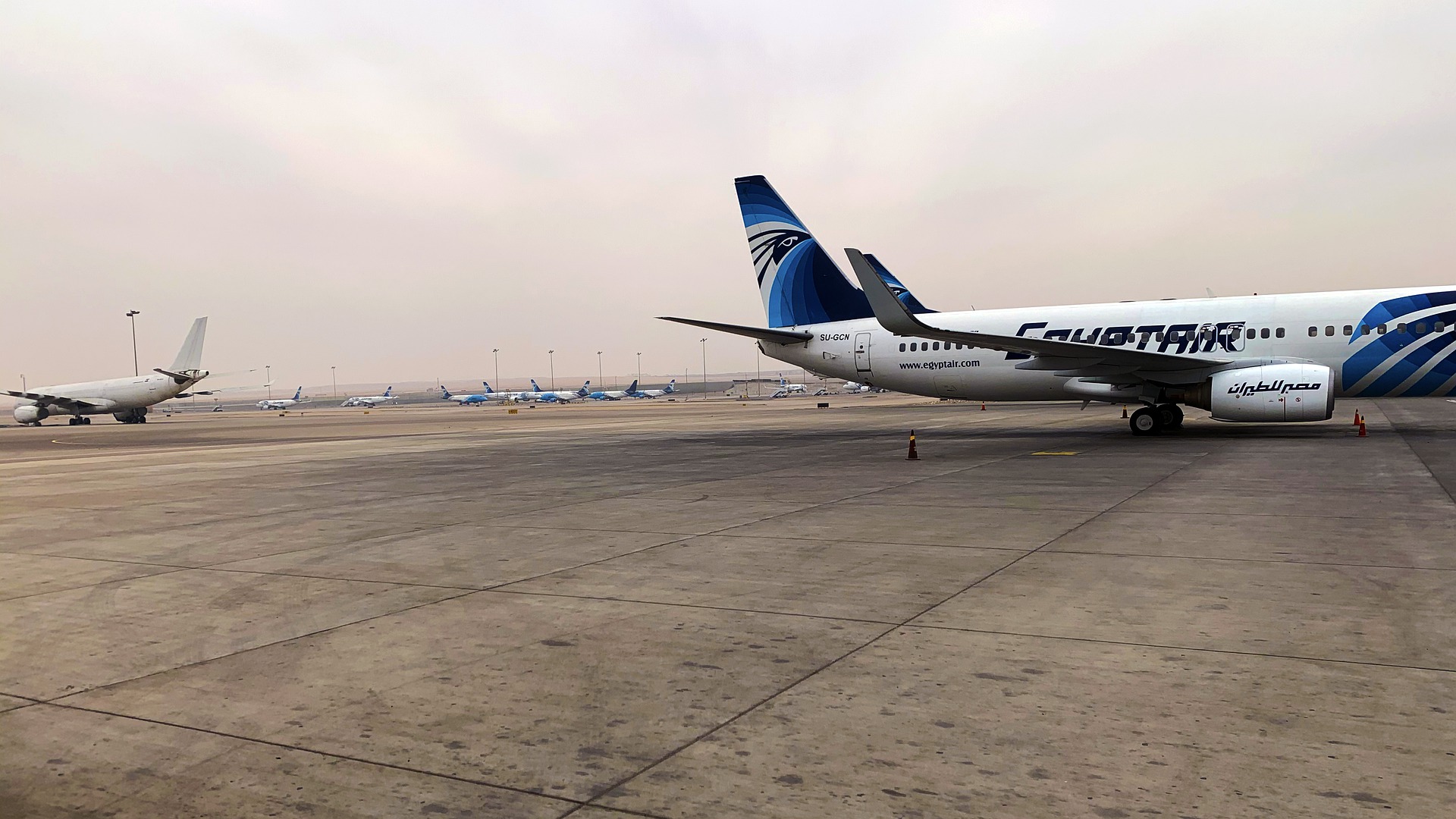
The Most Popular Food in Egypt
Egyptian cuisine ranges from ancient traditions to modern cuisine. Egyptian food has been influenced throughout history by many countries and cultures, notably by its Middle Eastern neighbors. Egyptian cuisine was originally influenced by Persians, Greeks, Romans, Arabs, and Ottomans (from modern-day Turkey) thousands of years ago. This is a list of the most popular plates in Egypt and the top to try while you’re there

Kushari
A combination of rice, spaghetti, small round macaroni, vermicelli,
fried onions, black lentils, and hummus topped with rich tomato sauce,
garlic and vinegar sauce, and chilli sauce. That combination may sound
unusual, but it’s definitely worth a go!

Rozz Me’ammar
A meal of white rice made with milk, butter, or cream, and chicken broth. All of the components are cooked in the oven before being served during special events and family gatherings. This is a meal that you should taste on your trip. There are several places that serve this meal, so don’t be concerned about locating one.

Mulukhiya
A chopped green leafy vegetable cooked with garlic in a beef, rabbit, or chicken stew and eaten with rice or toast. Mulukhiya is noteworthy in that it is cooked differently in different parts of Egypt. Cities near the shore, for example, commonly make it with fish or shrimp. This meal is wonderful and must be tried
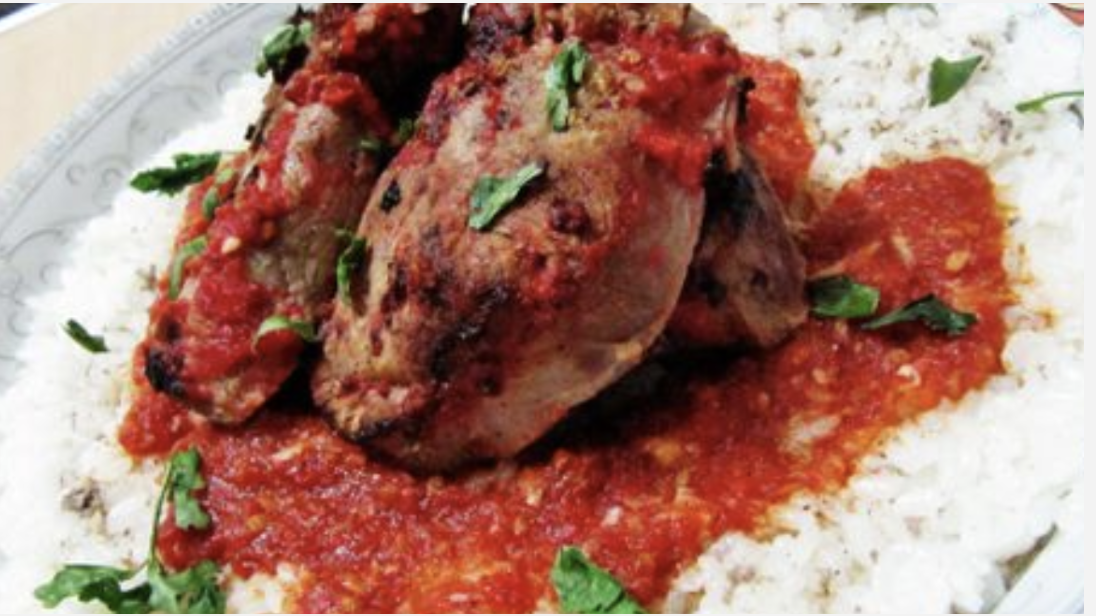
Fatta
A Nubian meal that is typically served for religious occasions. Layers of fried bread and rice are topped with a tomato sauce simmered with garlic and vinegar, beef broth, and huge chunks of meat. The meal is incredibly tasty, but it is highly fatty, so only eat it on exceptional occasions.
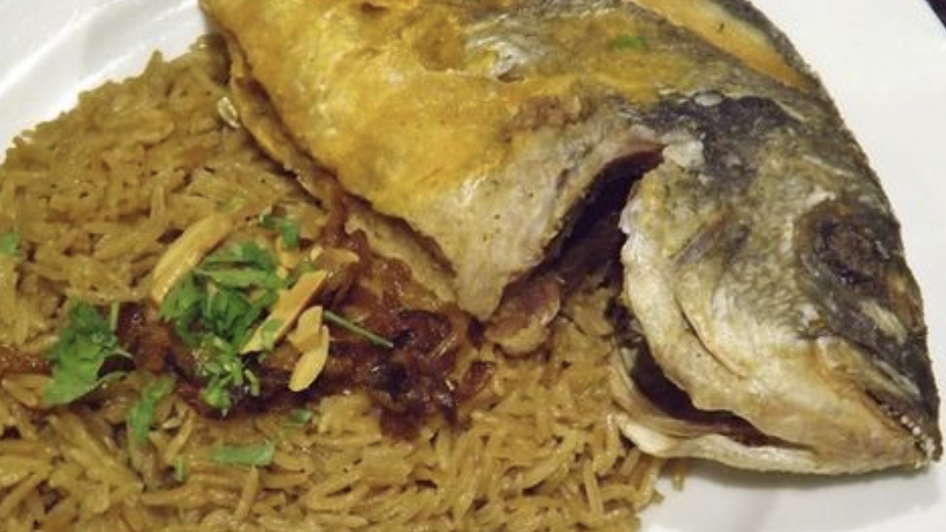
Sayadeya
A meal that is mostly prepared in coastal towns like as Suez, Port Said, and Alexandria. It’s made with white fish like bass or bluefish or Shrimps, yellow rice, onion, spices, and tomato sauce. After that, it is cooked in an earthenware pot.

Ful Medames
This cuisine, which consists of lava beans served with oil and lemon juice, is one of the most typical basic foods for Egyptians. If you wish, you may also add garlic or onion. People consume ful in a variety of ways, including with butter, spicy oil, olive oil, tomato sauce, pepper, pastrami, parsley, sausage, and boiled or fried eggs. Ful is thought to have been prepared as far back as ancient Egypt.

Ta’ameya (Egyptian Falafel)
Another popular Egyptian dish that is frequently served with Ful. Ta’meya or Falafel is made mostly of crushed fava beans combined with additional seasonings and cooked. It is typically served with tahina, salad, and Egyptian bread. That’s also a great dinner for vegans! Unlike Lebanese and Syrian falafel, this one is produced from Fava Beans rather than Hummus and has a distinct flavor.
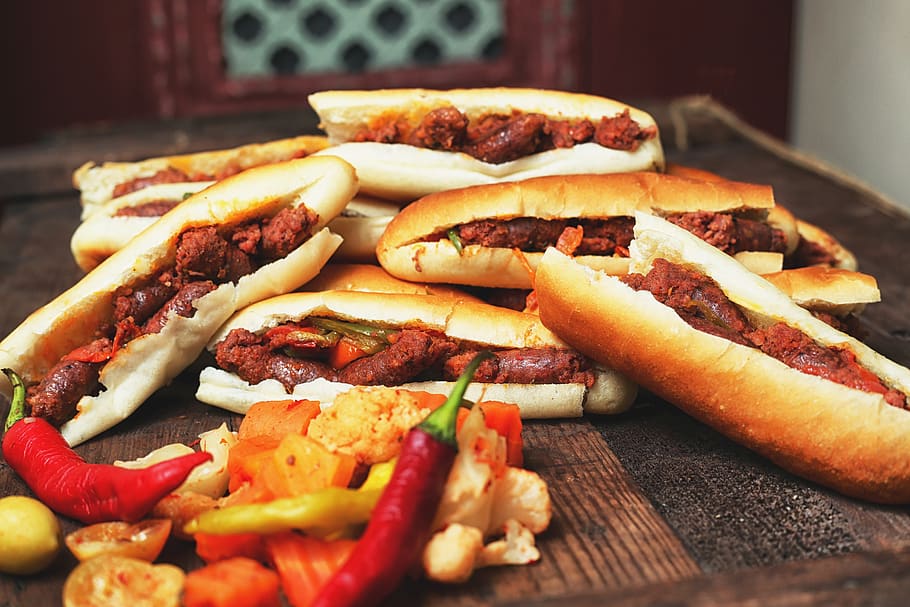
Alexandrian Sausages & Liver
Belongs to street food but may also be prepared at home. The liver is seasoned with chilli pepper, and garlic or onion may be added if desired. The sausage is often prepared in a variety of ways, the most common of which include tomato sauce and hot pepper. Both are served with pickles.

Kebab & Kofta
If you enjoy beef, this dish is a must-try! Kebab is made using grilled meat chunks (lamb or veal). Kofta, on the other hand, is a chunk of minced beef that is also grilled. Both are accompanied by Egyptian bread, salads, and tahina. This one is available at practically every restaurant in Egypt.

Besarah
Another great vegetarian option! On top, a green creamy mash of parsley, dill, leek, ground fava beans, spices, green pepper, and fried onions. With Egyptian bread and green onions on the side. This meal is not widely available in restaurants and is not often consumed in families, yet it is delicious. If you’re lucky, you’ll be able to find it someplace.
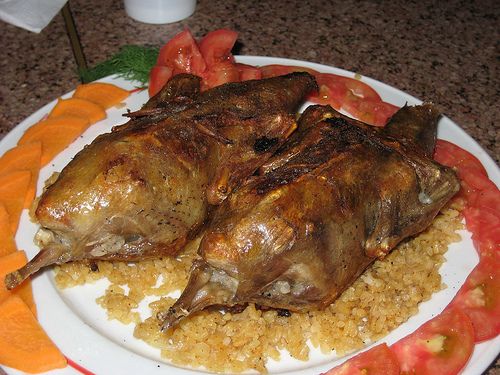
Pigeon
Pigeons (Hamaam), a traditional delicacy meal, are reared in conical pigeon towers across Egypt. Before being grilled or baked, they are packed with seasoned rice or, much better, bulgur wheat (freek). If you don’t mind giving it a go, this platter is actually rather tasty! Especially if you have it somewhere where you can do it like a pro!
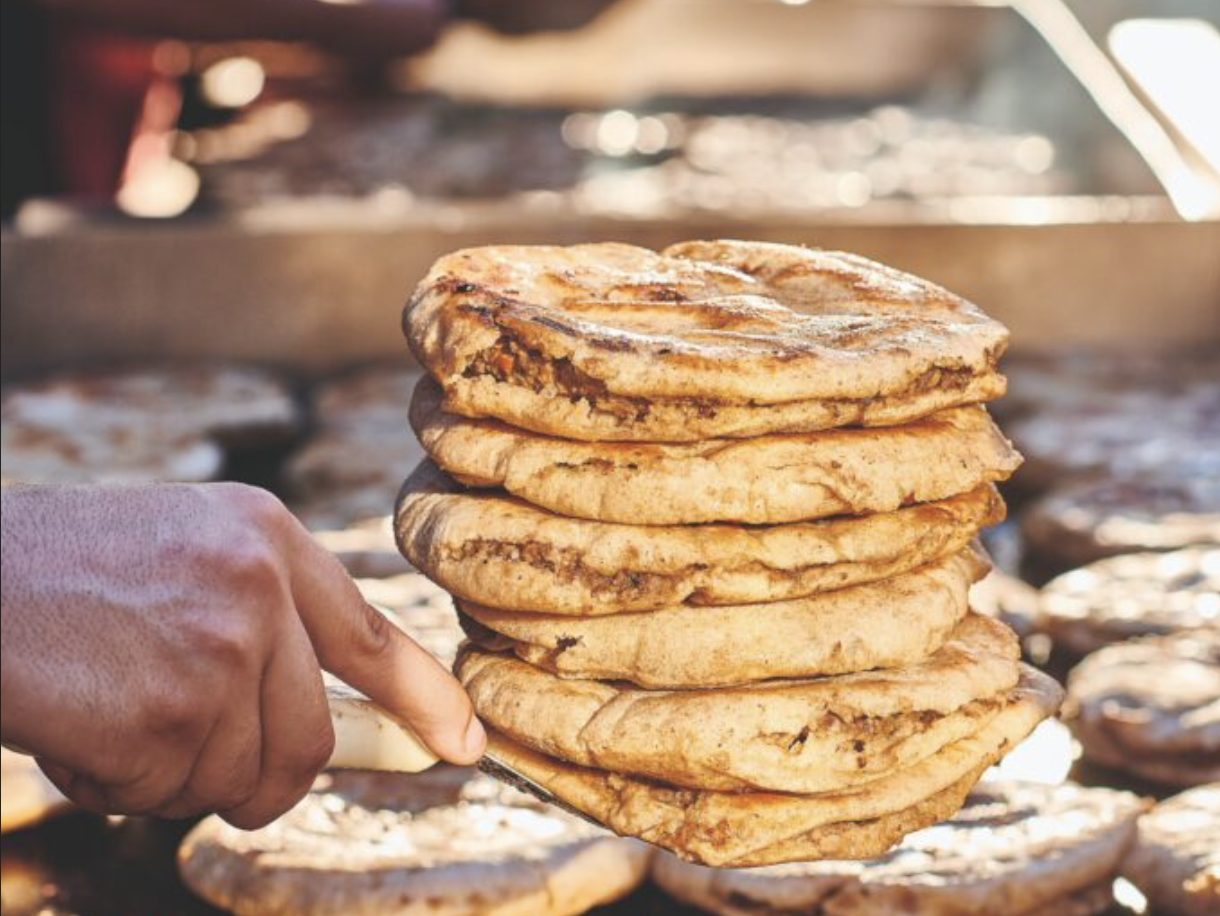
Hawawshi
It’s a typical Egyptian bread (similar to pita bread) that’s frequently filled with minced meat, onion, and pepper. Hawawshi is arguably best recognized as a comfort food staple in Egyptian home cuisine. You can buy it at a variety of booths across Cairo, but we recommend being selective about where you acquire it.

Umm Ali
Even if you only have a few minutes in Egypt, this is a must-try dessert. Om Ali, which translates as Ali’s mother, is formed of layers of puff pastry soaked in milk and then baked with almonds, raisins, coconut flakes, and sugar. The baked bread with hot milk, supplemented by a variety of other toppings, making this a dish to remember.
What's the Travel Budget in Egypt?
Flights
-
Flights start at roughly $210 from nearby countries. Tickets however on average cost around $600 and can cost more depending on which class and from which country you depart from.
Accommodation
-
Nomad Backpacking style travelers can expect to spend around $120 for a week
-
Budget travelers can expect to spend around $200 for a week
-
Mid-range travelers can expect to spend around $380 for a week
-
Luxury travelers can expect to spend around $2000 for a week
Food Budget (Three meals and drinks)
-
Nomad Backpacking style travelers can expect to spend around $7 per person per day
-
Budget travelers can expect to pay around $20 per person per day
-
Mid-range travelers on average would cost them $25 to $39 per person per day
-
Luxury travelers can expect to pay around $45 to $90 per person per day
Overall Budget Styles (Not including flights)
-
Nomad Backpacking style travelers can expect to spend around $170 for a week
-
Budget travelers can expect to spend around $340 for one person for a week
-
Mid-range travelers can expect to spend around $653 for one person for a week
-
Luxury travelers can expect to spend around $2630 for one person for a week
Flights
-
Flights start at roughly $210 from nearby countries. Tickets however on average cost around $600 and can cost more depending on which class and from which country you depart from.
Accommodation
-
Nomad Backpacking style travelers can expect to spend around $120 for a week
-
Budget travelers can expect to spend around $200 for a week
-
Mid-range travelers can expect to spend around $380 for a week
-
Luxury travelers can expect to spend around $2000 for a week
Food Budget (Three meals and drinks)
-
Nomad Backpacking style travelers can expect to spend around $7 per person per day
-
Budget travelers can expect to pay around $20 per person per day
-
Mid-range travelers on average would cost them $25 to $39 per person per day
-
Luxury travelers can expect to pay around $45 to $90 per person per day
Overall Budget Styles (Not including flights)
-
Nomad Backpacking style travelers can expect to spend around $170 for a week
-
Budget travelers can expect to spend around $340 for one person for a week
-
Mid-range travelers can expect to spend around $653 for one person for a week
-
Luxury travelers can expect to spend around $2630 for one person for a week
Flights
-
Flights start at roughly $210 from nearby countries. Tickets however on average cost around $600 and can cost more depending on which class and from which country you depart from.
Accommodation
-
Nomad Backpacking style travelers can expect to spend around $120 for a week
-
Budget travelers can expect to spend around $200 for a week
-
Mid-range travelers can expect to spend around $380 for a week
-
Luxury travelers can expect to spend around $2000 for a week
Food Budget (Three meals and drinks)
-
Nomad Backpacking style travelers can expect to spend around $7 per person per day
-
Budget travelers can expect to pay around $20 per person per day
-
Mid-range travelers on average would cost them $25 to $39 per person per day
-
Luxury travelers can expect to pay around $45 to $90 per person per day
Overall Budget Styles (Not including flights)
-
Nomad Backpacking style travelers can expect to spend around $170 for a week
-
Budget travelers can expect to spend around $340 for one person for a week
-
Mid-range travelers can expect to spend around $653 for one person for a week
-
Luxury travelers can expect to spend around $2630 for one person for a week
Flights
-
Flights start at roughly $210 from nearby countries. Tickets however on average cost around $600 and can cost more depending on which class and from which country you depart from.
Accommodation
-
Nomad Backpacking style travelers can expect to spend around $120 for a week
-
Budget travelers can expect to spend around $200 for a week
-
Mid-range travelers can expect to spend around $380 for a week
-
Luxury travelers can expect to spend around $2000 for a week
Food Budget (Three meals and drinks)
-
Nomad Backpacking style travelers can expect to spend around $7 per person per day
-
Budget travelers can expect to pay around $20 per person per day
-
Mid-range travelers on average would cost them $25 to $39 per person per day
-
Luxury travelers can expect to pay around $45 to $90 per person per day
Overall Budget Styles (Not including flights)
-
Nomad Backpacking style travelers can expect to spend around $170 for a week
-
Budget travelers can expect to spend around $340 for one person for a week
-
Mid-range travelers can expect to spend around $653 for one person for a week
-
Luxury travelers can expect to spend around $2630 for one person for a week
If you want to know what to pack, read this list below:
- This is a conservative country that can get incredibly hot, dress accordingly
- Raincoat or Light Waterproof Jacket
- Hiking Boots or Sturdy Sneakers (Shoes You Don’t Mind Getting Wet)
- Sunscreen
- Insect Protection – Repellent and Clothing
- Sunglasses and Sun Hat
- Water Shoes
- Beach Towels/Sarong
- Dry Bag
- Money Belt or Cross Bag
- Portable Medical Kit
- Flashlight or Headlamp
- Copies of your passport.
- Get all the needed vaccinations before traveling
- A power bank is a must in any travel.
- Always have some cash with you just in case there are no ATMs and if you are dealing with a business that solely accepts cash
- Get yourself an adapter for your gadgets
- 1 toothbrush
- 1 tube of toothpaste
- 1 razor
- 1 package of dental floss
- 1 small bottle of shampoo
- 1 small bottle of shower gel
- 1 towel
- Deodorant
- Band-Aids
- Hydrocortisone cream
- Antibacterial cream
- Earplugs
- Tylenol
- Hand sanitizer (germs = sick = bad holiday)
- A key or combination lock
- Zip-lock bags
- Plastic bags (great for laundry)
- Universal charger/adaptor
- LifeStraw (A water bottle with a purifier)
- 1 dry shampoo spray & talc powder
- 1 hairbrush
- Makeup you use
- Hairbands & hair clips
- Feminine hygiene products
Clothing For Boys
- 1 pair of jeans or khaki pants
- 1 pair of shorts
- 1 bathing suit
- 5 T-shirts
- 1 long-sleeved T-shirt
- 1 pair of flip-flops
- 1 pair of sneakers
- 6 pairs of socks
- 5 pairs of boxer shorts
Clothing For Girls
- 1 swimsuit
- 1 sarong
- 1 pair of stretchy jeans
- 1 pair of leggings
- 2-3 long-sleeve tops
- 2-3 T-shirts
- 3-4 spaghetti tops
- 1 light cardigan
Want to plan your own trip, here are some of the best resources that can help you
- Skyscanner – They search small websites and budget airlines that larger search sites tend to miss. They are hands down the number one place to start.
- Momondo – This is another favorite flight search engine because they search such a wide variety of sites and airlines. Always check here too.
- Booking.com – The best all-around booking site that constantly provides the most affordable and lowest rates. They have the widest selection of budget accommodation.
- Couchsurfing – This website allows you to stay on people’s couches or spare rooms for free. It’s a great way to save money while meeting locals who can tell you the ins and outs of their city. The site also lists events you can attend to meet people (even if you’re not staying with someone).
- Intrepid Travel – If you want to do group tours, go with Intrepid. They offer good small group tours that use local operators and leave a small environmental footprint.
- Grassroots Volunteering – For volunteering, Grassroots Volunteering compiles a list of good local volunteer organizations that keep the money within the community.
- Get Your Guide – Get Your Guide is a huge online marketplace for tours and excursions. They have tons of tour options available in cities all around the world, including everything from cooking classes, walking tours, street art lessons, and more! It has the world’s largest collection of things to do with more than 30,000 activities in 7500 destinations.
- SafetyWing – Safety Wing offers convenient and affordable plans tailored to digital nomads and long-term travelers. They have cheap monthly plans, great customer service, and an easy-to-use claims process that makes it perfect for those on the road.
- Trip Advisor: Check the reviews and then book your accommodation. TripAdvisor is where you go when you want to compare prices with multiple accommodation providers.
- VRBO: is the main search engine to use when you are looking for a home or apartment rental. It can sometimes be cheaper than hotels and it is the best way to stay in areas that offer a more local feel.
- Hostelworld: With one of the largest databases of hostels in the world, Hostelworld is the go-to site when you are looking for budget accommodation.
- Rome 2 Rio: If you want to see how to get somewhere by plane, train, bus, ferry, or car Rome2Rio lays it all out for you as well as related costs.
- World Nomads Insurance: When traveling you should always have travel insurance. We have found the best bang for your buck is by far World Nomads.
Final Thoughts
After reading this Ultimate Guide about Egypt, would you go?
If you’ve been there, what did you do? was it enjoyable?
1 Comment
Oh my god by far the most helpful guide I stumbled upon! will use it for my trip to Egypt for sure, thank you!!